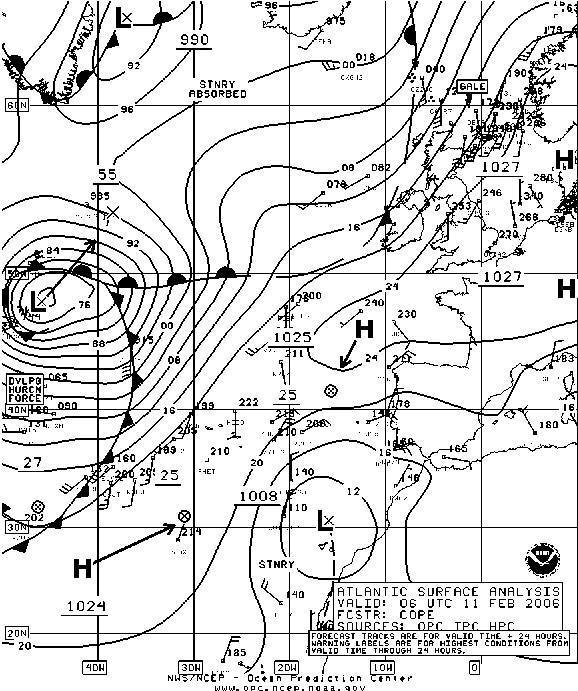Sarah's Atlantic Circle
| Winter Storm Strikes Cascais |
 Around
the 11th of February, 2006 a severe storm was developing in the eastern
North Atlantic. The 0600Z NOAA surface analysis shows this developing
hurricane force storm. The storm was slowly moving to the NE and
deepening. This would not bring severe weather to the coast or Portugal and
Cascais, but it would bring very large seas. At the time of this chart we
were enjoying warm and calm conditions in the Cascais Marina. I used these
days to check sails and do other chores on Sarah that were made easy by the
pleasant weather. Around
the 11th of February, 2006 a severe storm was developing in the eastern
North Atlantic. The 0600Z NOAA surface analysis shows this developing
hurricane force storm. The storm was slowly moving to the NE and
deepening. This would not bring severe weather to the coast or Portugal and
Cascais, but it would bring very large seas. At the time of this chart we
were enjoying warm and calm conditions in the Cascais Marina. I used these
days to check sails and do other chores on Sarah that were made easy by the
pleasant weather. |
|
|
|
|
|
|